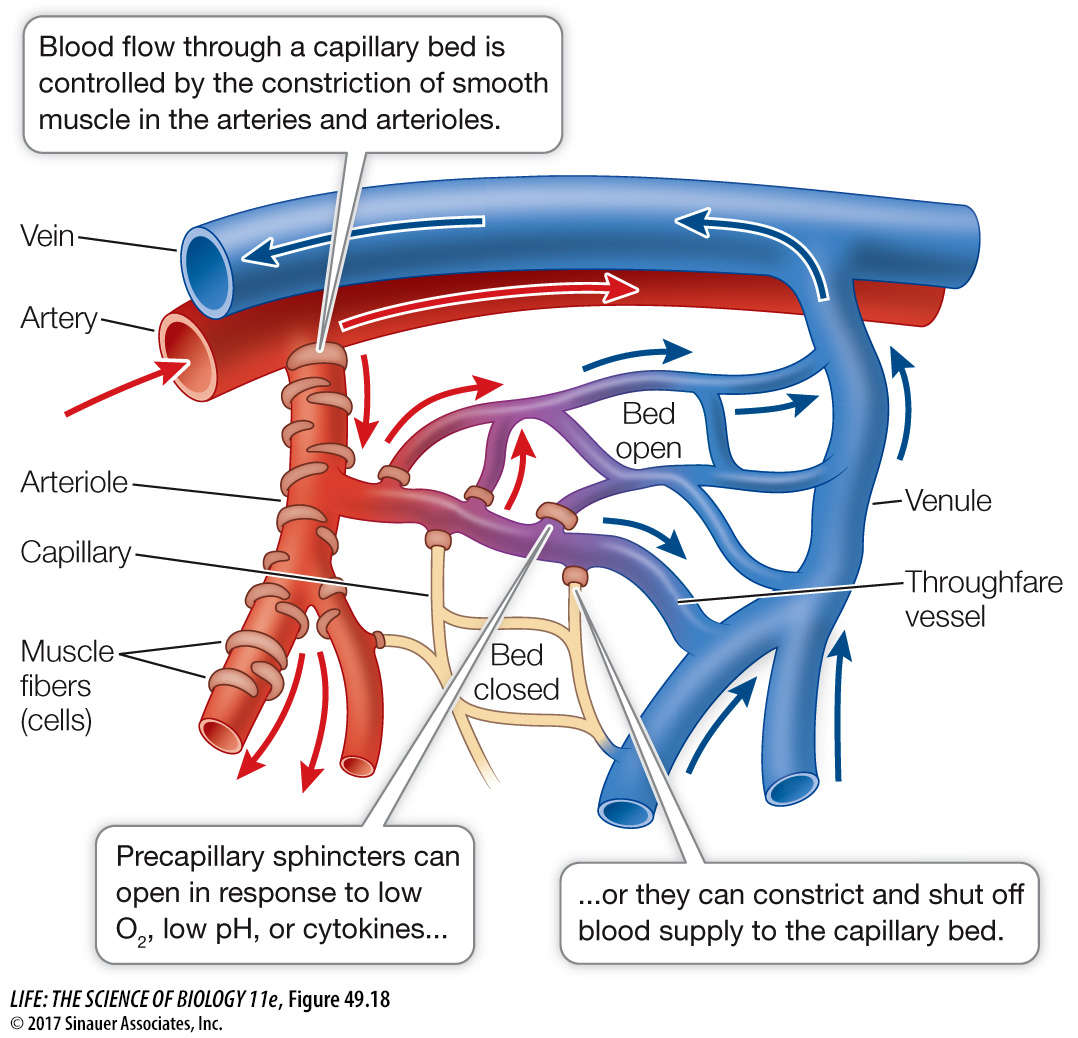Autoregulation matches local blood flow to local need
The amount of blood that flows through a capillary bed is controlled by the smooth muscle of the arteries and arterioles feeding that bed. Figure 49.18 illustrates the flow of blood in a typical capillary bed. Blood flows into the bed from an arteriole. Smooth muscle “cuffs,” or precapillary sphincters, on the arteriole can shut off the supply of blood to the capillary bed. When the precapillary sphincters are relaxed and the arteriole is open, blood flow through the capillaries increases.

Autoregulation depends on the sensitivity of the smooth muscle to its local chemical environment. Low O2 concentrations and high CO2 concentrations cause the smooth muscle to relax, thus increasing the supply of blood, which brings in more O2 and carries away CO2—a response known as hyperemia, which means “excess blood.” Increases in other by-